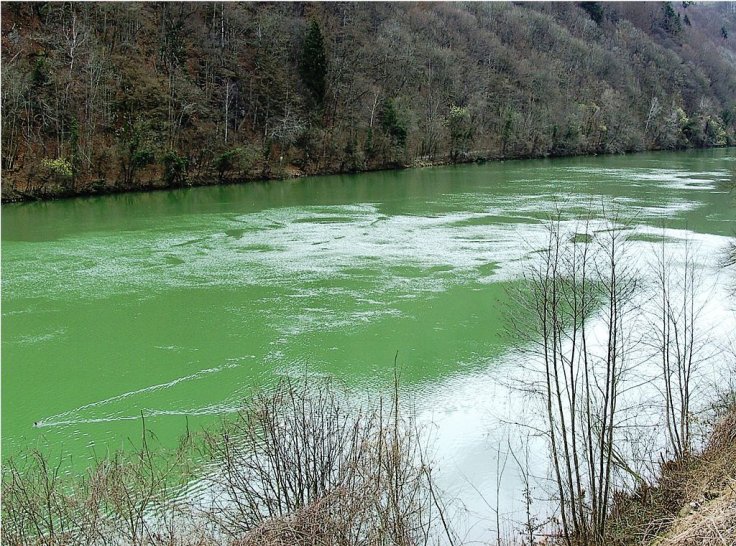US rivers have been changing their colors from blue to yellow and green, according to new satellite images. This shocking revelation came after researchers analyzed 235,000 satellite images, taken between 1984 and 2018, from NASA and the US Geological Survey (USGS) Landsat program.
What These Satellite Images Indicate?

Over half of those images showed rivers with a dominant hue of yellow, while more than a third of those satellite images revealed mostly green rivers. Just eight percent of those rivers in the images were blue.
The lead author John Gardner, a postdoctoral researcher in the Global Hydrology Lab at the University of North Carolina, said that most of the rivers in the US are changing gradually and remain unnoticed by humans. But according to him the areas that are the fastest-changing are more "likely to be man-made".
Rivers can change colors—blue, green, yellow, or any other color—depending on the amount of suspended sediment, pollutants, algae or dissolved organic matter in the water.
The most common cause of river water to change color is minerals. When a rock is weathered down over time, the minerals from the rock are dissolved and small pieces are released into the water causing different colors, according to American Rivers. Iron, manganese and calcium carbonate from limestone can cause water to range in color from red and orange to green and blue.

River water turns green due to algal bloom, affecting the health of the water body as the algae consume nutrients from the water along with dissolved oxygen causing negative effects on the ecosystem of the river. River pollution can also cause an algal bloom. The color caused by algae can vary from dark green to almost reddish color. Similarly, rivers turn yellow when they carry more sediment. As explained by Gardner, even though both the sediment and algae are important, too much or too little of either can be disruptive.
US Rivers
According to the study, which was published in the journal Geophysical Research Letters, 55 percent of the rivers varied in color over time. While a third of the changed color over the 34-year period, only 12 percent maintained a constant color. The researchers also noticed that rivers in the north and the west side of the country tended to become greener, while the eastern regions of the US had a trend towards yellow rivers. Gardner said that big trends to yellow or green could be "worrying" but it would also depend on the individual river.

The satellite images revealed those places where human influences—dams, urban development, and agricultural activities—may be working as a combined factor to change the color of some rivers. But those are not permanent. According to Gardner, if these changes are occurring due to local mismanagement that can be fixed.
By identifying the areas which are changing dramatically, scientists could figure out what is causing the change. It is now important to understand how the changes in river color affect the ecosystem and which are the changes scientists need to focus on.









